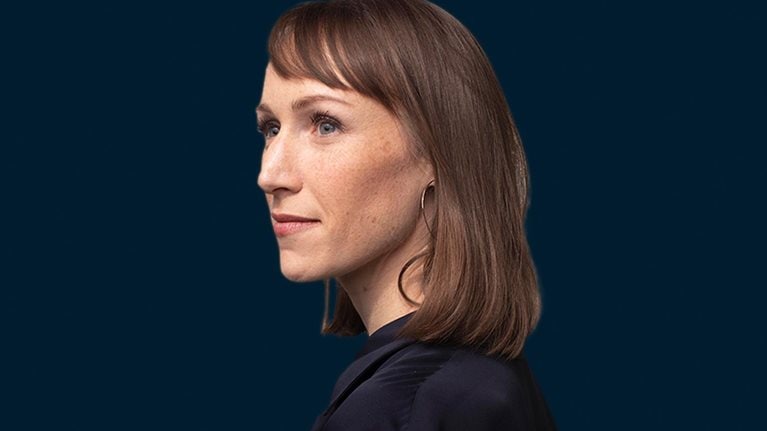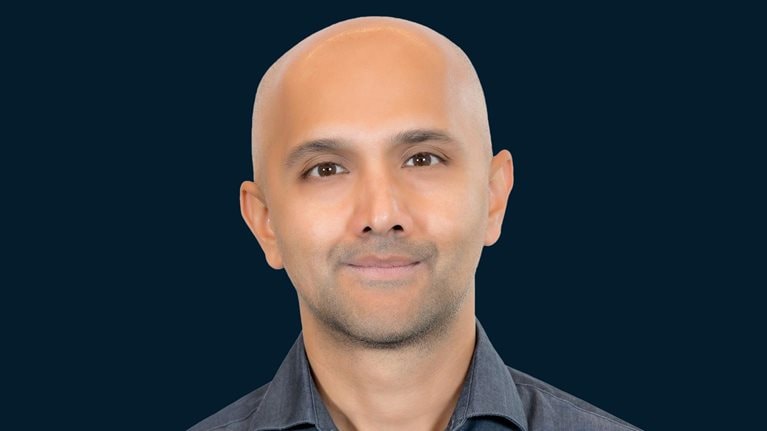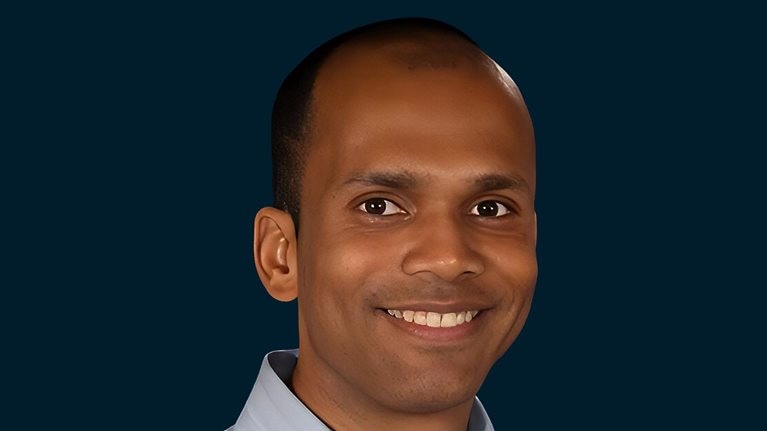In this episode of McKinsey on Building Products, a podcast dedicated to the exploration of software, product management, and engineering, McKinsey partner Rikki Singh talks to Kareem Yusuf, senior vice president of product management and growth at IBM. Throughout his career, Yusuf has worked across disciplines to sharpen his product management skills and has led IBM in creating platforms for companies to improve their sustainability practices. In their conversation, Singh and Yusuf discuss current innovation in the field of sustainability products, the potential of AI in the space, the connection between sustainability and profitability, and how to empower customers to be more sustainable. This interview took place in June 2023 as part of the McKinsey Engineering Academy speaker series. An abridged version of their conversation follows.
The evolving landscape of sustainability products
Rikki Singh: How do you define sustainability in the context of building products?
Kareem Yusuf: There are two dimensions to sustainable products. There is building products to support clients’ sustainability journeys, and there is building products in a sustainable way, which involves understanding what it takes to create your products and what kind of energies you are consuming in the process. Within the first dimension, the products we build to operationalize sustainability have a big element of data solution to them, such as products that handle environmental, social, and governance [ESG] data management, analytics, and reporting.
There are opportunities in core domains—such as enterprise asset management, supply chain, and IT—to push a focus on sustainability within the enterprise through physical or digital assets. We shaped our sustainability-products portfolio using these key categories. For example, in IT, a sustainability product can help with green-energy optimization within a data center.
Rikki Singh: A lot of product managers might be interested in learning more about building products that empower or enable their customers to be sustainable. Could you give some examples of products that you’ve seen in the market that achieve this successfully?
Kareem Yusuf: Our core product in ESG data management and analytics is called Envizi.
In the area of enterprise asset management and real estate operations, we’ve been building and evolving a few product lines for years. Our foremost product in this space is Maximo. We evolved our products by understanding where our clients’ assets are, managing their maintenance routines, and tracking how their assets are performing. When you start monitoring management based on asset performance, you can link that data to an ESG data platform such as Envizi and begin to activate the relevant feedback loops to create operational change.
Subscribe to the McKinsey on Building Products podcast
In the area of IT, we have a product line called Turbonomic that’s focused on application resource management. The program can help companies optimize CPU [computer processing unit] usage across a large data center to measure application performance. All that data also allows you to create an energy consumption profile for your application.
Another example is in supply chain. Using a platform called Transparent Supply, we can track products within a supply chain to better understand where things are and link those insights to an action plan.
For product managers who are thinking about building products in the sustainability space, it’s important to think about the connection between the product they’re providing and day-to-day operations. The only way to make companies more sustainable is to ensure the sustainable actions they take are part of their day-to-day.
Rikki Singh: Are there any industries or customers that are ahead in terms of their sustainability approach and discussions?
Kareem Yusuf: Interest in sustainability is broadly-based, but the area of focus is different across industries. For example, in financial services, discussions were typically centered on IT computing or understanding real estate profiles. Recently, that has changed. A lot of discussions in financial services now focus on finance permissions, which is part of the Scope 3 emissions conversation because it’s about understanding where the money that financial services firms are lending or investing is going and how that money is affecting sustainability downstream.
So, for example, if a bank is funding a lot of steel manufacturing plants, what is its responsibility in the emissions being created? Interest in sustainability products is universal, and concerns vary by industry. Companies can narrow their focus by determining which areas—between Scope 1, 2, or 3 emissions—they affect the most during their everyday business operations.
Rikki Singh: Is feasibility also a factor? I would assume addressing Scope 1 or 2 emissions might be easier because addressing Scope 3 requires bringing in additional characters.
Kareem Yusuf: That is easier, but Scope 3 has become quite topical. Product managers have to determine what it is they’re trying to achieve. They may sometimes choose to tackle “less feasible” projects because they allow product managers to bring differentiated value to the market. If they tackle the more feasible projects, they have to find their basis for differentiation. Is it cheaper, quicker, faster, or easier than other products? Product managers should always be thinking about their hook.
Making sustainability actionable
Rikki Singh: People sometimes end up viewing sustainability and profitability as different dimensions. How should companies balance the need for sustainability with the need for profitability?
Kareem Yusuf: Sustainability and profitability go hand in hand. One simple example: what customer doesn’t want to reduce their energy costs? Energy costs are on the rise, so if you reduce your energy consumption, you reduce your emissions and your costs. Another example is waste management. Customers want to be better at recycling, so leveraging sustainability products can create processes that are more efficient. Companies can connect sustainability products to their core operational metrics.
Rikki Singh: At one point, you had to make the business case for sustainability. Now, it sounds like more customers are proactively asking for it versus viewing them as disparate goals.
Kareem Yusuf: Indeed. There are two factors we have to consider in sustainability-product creation: balancing innovation with doing good and meeting the expectations of employees and customers. Customers want more visibility into what companies are doing. And delivering a great employee experience benefits how employees work and the bottom line. And let’s not ignore regulation, which offers a different kind of pressure. I believe that sustainability is all about driving good business and doing business more effectively.
The potential of AI in building sustainability products
Rikki Singh: What are some challenges product managers encounter when building sustainability products?
Kareem Yusuf: Getting data is a big challenge. Even getting a handle on a corporation’s utility bills can be difficult because most of that data is buried in invoices. In these cases, product managers have to figure out how to leverage AI to do a quick entity extraction from invoices so they can quickly pull together the bigger picture. They have to do some heavy lifting for just baseline data.
Beyond that, other struggles when building the product include coming up with a clear value proposition and determining what people will pay for the product, how it will be consumed, and how to deploy it. Every product that has failed has done so because of its go-to-market strategy and not because of the product itself. The go-to-market strategy is the most critical element for a product manager to get right, even more important than their feature function.
Rikki Singh: How do you think technology innovations such as generative AI will solve some of the challenges of building products?
Kareem Yusuf: Generative AI creates new opportunities for us to build products. It doesn’t necessarily solve the problem of building products, however. I think product management—or even software development—is quintessentially a human endeavor, but technology allows us to apply ourselves to higher-order concerns. What excites me about generative AI is the ability to scale its use cases within the business.
A lot of the conversation around generative AI tends to focus on large language models—and rightly so. But in the context of sustainability, it’s more about exploring environmental data. For example, we’ve worked on geospatial-based foundation models with NASA to make them easier to understand. In a product called the Environmental Intelligence Suite, we leveraged those kinds of capabilities to help with the detection of environmental change, especially as more businesses are thinking about creating processes for managing flooding and fires. Another example is in utilities and vegetation management. A lot of work goes into figuring out when and where to cut grass to avoid wildfires.
There are other use cases that we are focused on. We’re doing a lot of work in AI-based orchestration, particularly in talent acquisition, HR, and sales operations, where folks need to dynamically assemble business processes using multiple systems. An HR professional, for example, can ask AI to create a requisition in a certain kind of geography or use large language models to summarize résumés and generate acceptance letters.
Rikki Singh: Where in the value chain do you think the source of differentiation for generative AI exists? For instance, there are bets on apps, on foundational models, or, as you said, on data.
Kareem Yusuf: I have a bit of a cheat answer, but I think there’s value at every level. Open-source software is finding success on the model layer and the foundational model, but at the same time, there’s value in generating specific, targeted models. Sometimes people need a model with a complete pedigree set to be used for a very specific kind of use case. There will be differentiation created around that. In the platform layer, differentiation could come from tooling, data storage, or governance. And how does all that innovation get leveraged? Which apps have been built to easily integrate generative AI and in what domain?
This is the beauty of being a product manager. When I think about all the work we can do in software as product managers, there is that wonderful intersection of understanding markets and understanding the technology to see where we can propel differentiated value.
Building a successful career in product management
Rikki Singh: Could you share a bit about your career journey that has led you up this product road?
Kareem Yusuf: I’m an applied technologist, which came from my time working in academia as a research assistant during my PhD and working on expert decision-support systems. I’m a civil engineer by training, and I did research about AI expert systems to help with structural design decisions. That eventually took me to IBM to start working in technical support.
I stumbled into product management because, as every product manager knows, people in the field love to complain about products. I was complaining bitterly about a product I was supporting, and the executive of product management called me and said, “Would you like to come manage this product that you think is so bad?” Since then, I’ve worked as a product manager, led product management teams, and worked in M&A, which I think of as another way to bring products to market. I now run product management for all of IBM software.
It’s important to walk in the shoes of a couple of other people. Product managers need to spend time in the other disciplines. If you’ve never done technical sales, go do technical sales. There are opportunities in marketing, development, and many more areas. I’ve worked across all of these, which has made me a better product manager.
Rikki Singh: You touched on two key skill sets for product managers, both anchoring in empathy: empathy for your customers and empathy for the cross-functional stakeholders you have to influence to be successful. Are there other core skills that product managers need to be good at this job?
Kareem Yusuf: An analytical mindset never hurts. It’s helpful to have a way to synthesize lots of data to guide yourself and others in the same direction. Communication is also important because whether you’re leading a team or serving as a product manager, you’re often standing at the intersection of many functions. Being able to communicate effectively with others, which also includes listening and understanding, is an important element too.
As far as domain knowledge goes, the mileage varies. There are certain product managers who are users or masters of the domain that they’re looking to serve, which can be useful. But I think being a product manager is a job where you can come from several different entry points and evolve into the position.
Rikki Singh: How can product managers effectively address moments of uncertainty or floundering, especially in the context of legacy products or new market entries?
Kareem Yusuf: The most effective strategy for course correction is new data. We all get stuck in decisions we’ve made, so to move off a decision, we need an anchor point, which requires some level of data. I’ve always told my teams they can convince me of anything if they have new news. But then I always add, “news I can use.” It’s important as a product manager to be able to communicate or receive new news to revisit your assumptions.
Rikki Singh: Are there mistakes that product managers can avoid?
Kareem Yusuf: One is not understanding the go-to-market strategy. The go-to-market strategy is not just about knowing the customer but also about pricing the product correctly and reaching the buyer. Even reaching the buyer requires sellers who can engage with that kind of customer.
I also think it’s easy for product managers to get caught up in the feature function and road mapping at the expense of understanding customer usage. Market sentiment is important to fixate on—it’s about understanding what people are saying about your product and how you leverage that information to reach them.
Rikki Singh: What advice do you have for product managers in terms of career growth?
Kareem Yusuf: There are two dimensions to career growth, and you have to be deliberate about both. One dimension is domain experience. Continuous learning is important. Techniques evolve; new technologies are invented. For example, a product manager can’t create software products without being a technologist. If they are not technical, they should study to be.
The other dimension is leadership, which speaks more to moving up the ladder. Many of us get our first management role in a domain at which we have some level of experience and expertise, and then you start managing managers and larger organizations. But managing a team where you know everyone is a very different skill set from managing a team with more people than you’ll ever know or could ever remember the names of. How do you lead in that latter context? How do you inspire? How do you share vision? Your role begins to change. You’re more of a facilitator and enabler than you are a doer.
In all of this, my biggest advice would be to think about the job you want and try to talk to people who have that job and truly understand their story. You will find that people’s pasts vary. Do not be afraid to ask about what it took to get to where they are because there is a personal cost to this as well. Don’t be too focused on the title; be focused on responsibility and accountability and what you truly want to sign up for.


